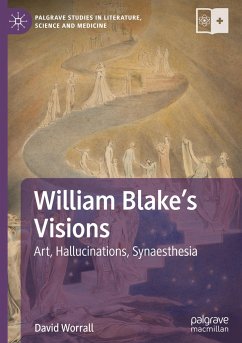This book is an inquiry into whether what Blake called his 'visions' can be attributed to recognizable perceptual phenomena. The conditions identified include visual hallucinations (some derived from migraine aura), and auditory and visual hallucinations derived from several types of synaesthesia. Over a long period of time, Blake has been celebrated as a 'visionary,' yet his 'visions' have not been discussed. Worrall draws on an understanding of neuroscience to examine both Blake's visual art and writings, and discusses the lack of evidence pointing towards psychosis or pathological ill-health, thus questioning the rumours pertaining to Blake's insanity.
In William Blake s Visions: Art, hallucinations, synaesthesia, David Worrall explores the visions traceable perceptual phenomenology . What Blake experienced, he explains, were not illusions or delusions, but hallucinations, images produced on his retina through neural processes . The book, which appears in the Palgrave Studies of Literature, Science and Medicine series, gives a highly technical account of the retino-cortical processes involved. ... It is good to have a firm scientific explanation of the visions ... . (Jenny Uglow, TLS The Times Literary Supplement, April 25, 2025)









